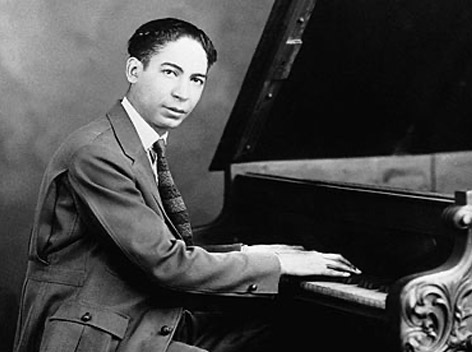
Illustration by Phil Long
Retrieval for the Sake of Renewal
A small portion of this article was adapted from an article originally published in the October 2020 issue of Christianity Today. It is reprinted with permission.
On his eightieth birthday, I described Jim Packer as the Robin Hood of evangelicalism, stealing from the rich and giving to the poor. I invited the audience, with him present, to imagine him in Lincoln green and stockings with a long bow. I think I saw a wry smile from him in response.[1]
What did I mean? By training and by dint of his own disciplined study, Jim acquired early in his career a deep knowledge of church history and the classic works of Christian theology. Popular evangelicalism, on the other hand, has often been profoundly ahistorical and anti-intellectual in outlook. Just as the absence of good King Richard had left England in turmoil during the time of Robin Hood, so modernity has caused troubles for the church. Packer himself described North American Protestantism as “man-centred, manipulative, success-oriented, self-indulgent, and sentimental.”[2] He therefore contrived, like Robin Hood, to “take from the rich and give to the poor.” Throughout his career, Jim was able to retrieve riches from the past and employ them for the purpose of renewing the life of Christians in the present.
Other Christians in the twentieth century responded to modernity similarly. Most famously, C. S. Lewis argued that the characteristic blindness of our age can only be discerned by reading the old books. To counter the “chronological snobbery” that assumes everything new is best, it was necessary, he said, to keep the “clean sea breeze of the centuries blowing through our minds.”[3] I call this strategy of retrieval for the sake of renewal, a response to modernity.
Lewis stumbled into reading the Christian classics almost accidentally through his studies as a literary critic. But what he found there is what Jim Packer and others have called the “great tradition.” Lewis said that when you have once found this, you have got on to “the great level viaduct which crosses the ages and which looks so high from the valleys, so low from the mountains, so narrow compared with the swamps, and so broad compared with the sheeptracks.”[4] For Packer and Lewis in England, it was important to recall the church in the modern world to this level viaduct, this great tradition. This was a place to stand in the midst of modernity.
Another contemporary parallel in the mid-twentieth century to Jim Packer’s evangelical exercise of historical retrieval for sake of present renewal was a movement among certain European Catholic theologians in the decades leading up to Vatican II. Henri de Lubac, Jean Danièlou, Hans Urs von Balthasar, Louis Bouyer, and others participated in this movement that was labelled derisively la nouvelle thèologie, or the new theology, by its opponents. “What united this diverse group,” says one critic, “were the convictions that 1) theology had to speak to the Church’s present situation and that 2) the key to theology’s relevance to the present lay in the creative recovery of its past.” In the language that came to be used later, the key to aggiornamento (renewal or adaptation) was to be found in ressourcement—“a rediscovery of the riches of the Church’s two-thousand-year treasury, a return to the very headwaters of the Christian tradition.”[5] The cry of ad fontes—back to the sources—that we associate with the Protestant Reformers was sounding from the lips of these twentieth-century Catholic theologians. “In their writings,” claims Marcellino D’Ambrosio, “the word ‘source’ only secondarily refers to a historical document; the primary meaning they assign to the term is a fountain-head of dynamic spiritual life which never runs dry.”[6] By immersing themselves in the Bible, the liturgy, the creeds and councils, the teachings of the Fathers and Doctors, the Saints and Mystics, these Catholics were seeking not principally a more accurate historical understanding, but rather a renewal in the same Holy Spirit that was the common inspiration of these writers and the common source of their wisdom. Out of this movement came the patristic revival in France, with its renewed scholarship, translation efforts, and focus on spirituality. This is parallel to the Puritan revival in the same years among evangelicals, which was likewise expressed in a renewed scholarship, fresh editions, and the stress on spirituality. In both historic movements there was a hermeneutic of retrieval and renewal that was seen as critical to addressing the condition of a church that was cut off from its own sources by the caustic ahistorical and pragmatic culture of modernity.
There were, of course, differences between Catholics and evangelicals at mid-century in terms of the understanding of tradition, the magisterium, and the role of Scripture in this double movement of retrieval and renewal. And there is a big difference between Jean Danièlou republishing the mystical writings of Gregory of Nyssa and Jim Packer encouraging the reprinting of John Owen’s work on the atonement or on the mortification of sin in believers. Packer was concerned, always, to appraise tradition critically in the light of Scripture. He wrote, “Scripture must have the last word on all human attempts to state its meaning, and tradition, viewed as a series of such human attempts, has a ministerial rather than a magisterial role.”[7] Tradition is a guide and it has great sapiential value, but it does not have canonical status; it is not a separate source of revelation apart from Holy Scripture.
Samuel Taylor Coleridge referred to the Scriptures in this sense as the “living educts of the imagination” so that a mind that has learned to discern meaning in Biblical history is able to draw up nourishment from all of history in this life-giving way. I think that is the sense of tradition here for these mid-twentieth-century theologians, Catholic and Protestant, where going back is a way of going forward, and retrieval is a step toward renewal. For both Packer and like-minded evangelicals, as for the ressourcement theologians, this was a critical strategy for renewal. It was a way of throwing a lifeline to a church sinking beneath the toxic waves of modernity. To change the metaphor, the church is like an army cut off from its historic supply lines by the forces of modernity. Without food and water and ammunition, the church weakens and is unable to repel the assaults of the enemy. In this situation, the church has needed some special operations forces to make strategic raids behind enemy lines, to retrieve resources from the past for the renewal of the beleaguered troops in the present.
In an article on ecumenical orthodoxy in 1996, Packer identified himself as operating in a very similar way to these other twentieth-century figures, saying, “As an Anglican, a Protestant, an evangelical, and … a ‘small-c’ catholic, I theologize out of what I see as the authentic biblical and creedal mainstream of Christian identity, the confessional and liturgical ‘great tradition.’”[8] From such riches he has addressed the poverty of popular evangelicalism, which he once described as “3,000 miles wide and half an inch deep.”[9]
We may be even more specific about his role as the Robin Hood of evangelicalism. Although he has stolen from the riches of the whole of church history and the great tradition, he came early to the conviction that there was much in the Puritan tradition to contribute to the church today. Indeed, he was one of the key catalysts in the post-war revival of Puritan or neo-Calvinist theology among evangelicals on both sides of the Atlantic. This was not antiquarianism. He felt the Puritans could correct what he called the “entrenched intellectualists, restless experientialists, and disaffected deviationists” among evangelicals today.[10] Since his first encounter with the Puritans at Oxford as librarian for the OICCU (Oxford Inter-Collegiate Christian Union), through his doctoral dissertation on Richard Baxter, and his part in founding the Puritan Studies Conferences, Packer drew deeply from this particular well of historical theology, this fount of “experimental Protestantism.” For a quarter century he led a seminar at Regent College with Jim Houston on Puritan and Cistercian Spirituality, which students enjoyed chiefly, I think, for the sparks that flew between the “two Jims” as they interacted over student papers. And the Regent College Library is now the happy beneficiary of the gift of a large number of seventeenth-century Puritan folios that Houston and Packer have passed on from their personal collections—old books to nourish another generation. Having these folios in our basement library, I often remind students that Regent is founded upon treasure—treasure stolen from the rich and given to the poor. This may serve as a cameo of Jim Packer’s wider influence for good among evangelicals. We are all richer on account of his theological generosity.
[1] The address, which I draw from below, was published in Timothy George, ed., J. I. Packer and the Evangelical Future: The Impact of His Life and Thought (Grand Rapids, MI: Baker Academic, 2009), 99–114.
[2] J. I. Packer, “Among God’s Giants” (Eastbourne, Sussex: Kingsway, 1991), 24.
[3] C. S. Lewis, “On the Reading of Old Books,” in God in the Dock: Essays on Theology and Ethics (Grand Rapids: Eerdmans, 1970), 202.
[4] Lewis, “On the Reading,” 204.
[5] Marcellino D’Ambrosio, “Ressourcement theology, aggiornamento, and the hermeneutics of tradition,” Communio 18 (1991): 532.
[6] D’Ambrosio, “Ressourcement,” 537.
[7] Packer quoted in Alister McGrath, J. I. Packer: A Biography (Grand Rapids: Baker, 1997), 252.
[8] McGrath, J. I. Packer, 252.
[9] J. I. Packer, Among God’s Giants (Eastbourne, Sussex: Kingsway, 1991), 24.
[10] J. I. Packer, The Quest for Godliness: The Puritan Vision of the Christian Life (Wheaton, Illinois: Crossway Books, 1990), 30.


